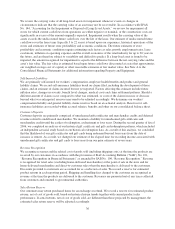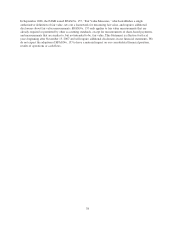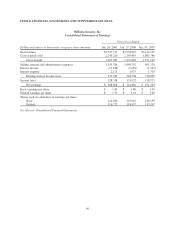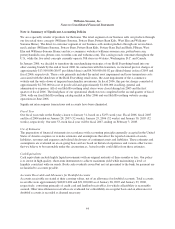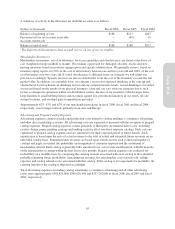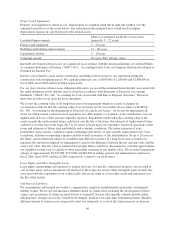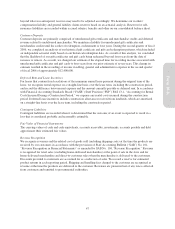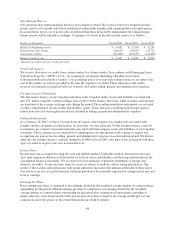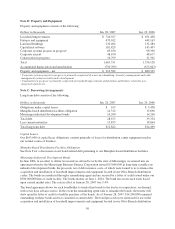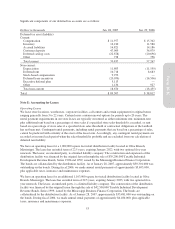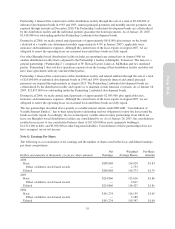Pottery Barn 2006 Annual Report Download - page 57
Download and view the complete annual report
Please find page 57 of the 2006 Pottery Barn annual report below. You can navigate through the pages in the report by either clicking on the pages listed below, or by using the keyword search tool below to find specific information within the annual report.
A summary of activity in the allowance for doubtful accounts is as follows:
Dollars in thousands Fiscal 2006 Fiscal 2005 Fiscal 2004
Balance at beginning of year $168 $217 $207
Provision for loss on accounts receivable — (49) 10
Accounts written off — — —
Balance at end of year1$168 $168 $217
1The majority of this amount relates to a full reserve on one of our receivables.
Merchandise Inventories
Merchandise inventories, net of an allowance for excess quantities and obsolescence, are stated at the lower of
cost (weighted average method) or market. We estimate a provision for damaged, obsolete, excess and slow-
moving inventory based on inventory aging reports and specific identification. We generally reserve, based on
inventory aging reports, for 50% of the cost of all inventory between one and two years old and 100% of the cost
of all inventory over two years old. If actual obsolescence is different from our estimate, we will adjust our
provision accordingly. Specific reserves are also recorded in the event the cost of the inventory exceeds the fair
market value. In addition, on a monthly basis, we estimate a reserve for expected shrinkage at the concept and
channel level based on historical shrinkage factors and our current inventory levels. Actual shrinkage is recorded
at year-end based on the results of our physical inventory count and can vary from our estimates due to such
factors as changes in operations within our distribution centers, the mix of our inventory (which ranges from
large furniture to small tabletop items) and execution against loss prevention initiatives in our stores, off-site
storage locations, and our third party transportation providers.
Approximately 62%, 63% and 62% of our merchandise purchases in fiscal 2006, fiscal 2005 and fiscal 2004,
respectively, were foreign-sourced, primarily from Asia and Europe.
Advertising and Prepaid Catalog Expenses
Advertising expenses consist of media and production costs related to catalog mailings, e-commerce advertising
and other direct marketing activities. All advertising costs are expensed as incurred with the exception of prepaid
catalog expenses. Prepaid catalog expenses consist primarily of third party incremental direct costs, including
creative design, paper, printing, postage and mailing costs for all of our direct response catalogs. Such costs are
capitalized as prepaid catalog expenses and are amortized over their expected period of future benefit. Such
amortization is based upon the ratio of actual revenues to the total of actual and estimated future revenues on an
individual catalog basis. Estimated future revenues are based upon various factors such as the total number of
catalogs and pages circulated, the probability and magnitude of consumer response and the assortment of
merchandise offered. Each catalog is generally fully amortized over a six to nine month period, with the majority
of the amortization occurring within the first four to five months. Prepaid catalog expenses are evaluated for
realizability on a monthly basis by comparing the carrying amount associated with each catalog to the estimated
probable remaining future profitability (remaining net revenues less merchandise cost of goods sold, selling
expenses and catalog related-costs) associated with that catalog. If the catalog is not expected to be profitable, the
carrying amount of the catalog is impaired accordingly.
Total advertising expenses (including catalog advertising, e-commerce advertising and all other advertising
costs) were approximately $365,829,000, $346,620,000 and $297,242,000 in fiscal 2006, fiscal 2005 and fiscal
2004, respectively.
45
Form 10-K



